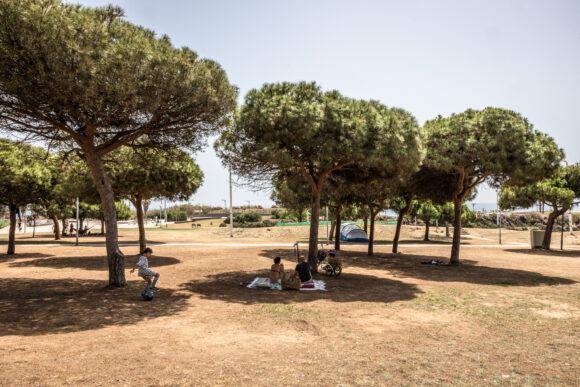In 2003, as Paris sweltered through a heat wave that would go on to kill an estimated 15,000 people across France, one oasis of cooler air remained off limits: the city’s roughly 400 public parks. They were temporarily closed due to the danger of falling tree limbs.
“That basically deprived people of the one small sliver of green space that they might have had in order to find a slightly cooler atmosphere,” says Richard C. Keller a professor of the history of medicine at the University of Wisconsin-Madison and author of Fatal Isolation: The Devastating Paris Heat Wave of 2003.
Trees losing their limbs is typically associated with severe weather such as tornadoes, hurricanes and thunderstorms. But a little known risk outside of arborist circles is that mature and seemingly healthy trees can suddenly lose branches in summer weather. It’s a phenomenon known as sudden limb failure, sudden limb drop or summer branch drop.
While reports of injuries from sudden limb failure are scarce, last month a woman was killed by a falling tree branch in a Washington D.C. park. The incident prompted at least one local tree maintenance service to send an email warning people of the risk.
Why trees that seem healthy suddenly lose their limbs is a bit of a mystery. “There’s no scientific consensus on why this is occurring,” says Spencer Campbell, plant clinic manager at the Morton Arboretum in Lisle, Illinois. “It’s difficult to predict.”
But at least one theory draws a connection between summer branch drop and extreme heat — especially if a hot summer is preceded by a wet spring. Wet springs allow for ample tree growth, which can lead to water stress when hotter summer temperatures arrive. Trees could be dropping limbs as a form of self-pruning.
Another idea holds that extreme winter weather — from cold temperatures to the pressure snow puts on branches — leads to internal weakening in trees, such that the pressure of new limb growth in spring tips them over the edge.
Summer branch drop was historically considered a hot-climate phenomenon, observed in places like Australia, South Africa and the southwestern US that typically receive little snow. But since at least the 1970s arborists have also reported it in places with a wider range of climates, including Illinois, New York and the UK.
Trees that experience sudden limb drop could also be unhealthy, even if not visibly so. (The tree in Washington had been inspected, pruned and found healthy in 2022, according to news reports.) “Professional arborists are trained to identify trunk decay, cankers, [and other] physical symptoms,” Spencer says, adding that “it is more difficult to diagnose if it’s an internal crack or a weak point.”
The most likely takeaway is that sudden limb drop stems from a confluence of circumstances: trees teetering on the edge of unhealthy, alongside conditions like extreme heat that push those trees to a breaking point.
That was the conclusion of a 2023 case study that looked at sudden limb drop across four cities in Portugal. Researchers determined that incidents of summer branch drop were linked to trees’ internal degradation, but noted that the degradation itself could also be linked to environmental conditions.
“I think for a lot of the trees in our landscape, it’s not just one thing; it’s many stress events,” Campbell says. Possible culprits range from unusually warm evenings to cold snaps, fungal disease and insect damage made worse by rising temperatures
Whatever the cause, Campbell says it’s not worth worrying too much about standing under trees, even in summer. “This event is exceptionally rare,” he says. “It does occur, but more often than not it occurs without someone noticing it.”
Photo: Visitors sit in the shade at Barcelonas Poblenou Park during a heat wave in July 2023.
Was this article valuable?
Here are more articles you may enjoy.



 More Floridians Moving Out Due to Housing, Insurance Costs, Cotality Report Says
More Floridians Moving Out Due to Housing, Insurance Costs, Cotality Report Says  Group Sues California Department of Insurance Over FAIR Plan Surcharges
Group Sues California Department of Insurance Over FAIR Plan Surcharges  Markel Insurance Restructures Markel Specialty, Appoints Leaders
Markel Insurance Restructures Markel Specialty, Appoints Leaders  Global Q1 Commercial Insurance Rates Drop 3%, but US Casualty Bucks the Trend
Global Q1 Commercial Insurance Rates Drop 3%, but US Casualty Bucks the Trend 

